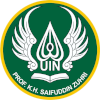Analysis of Tahfidz Program Entrance Examination Using C4.5 Method for Classification of Learning Groups in The Al-Mawaddah Region of Nurul Jadid Islamic Boarding School, Probolinggo, Indonesia
Keywords:
Tahfidz program, C4.5, classification, StreamlitAbstract
The tahfidz program aims to improve understanding and memorization of the Al-Quran in the Al-Mawaddah Region, Probolinggo, Indonesia, including those who organize the Tahfid Qur'an program. This research aims to increase the efficiency and accuracy of analyzing the Tahfid program entrance test results using the C4.5 Algorithm for study group classification and visualizing the results through a web-based interactive application using Streamlit. The C4.5 algorithm is used to build a classification model based on the results of the entrance test criteria. The application of Streamlit as a framework for creating interactive web applications makes it easier for users to enter entrance test data and study group classification results, making it easier to make decisions and plan to learn for Tahfid program administrators. The research results show that the use of the C4.5 Algorithm method and the streamlit application is practical in analyzing the results of the Tahfidz program entrance test and determining study groups, the C4.5 Algorithm succeeded in achieving a high level of accuracy with an accuracy of 94%, then it was implemented using streamlit. With the interactive application, tahfid program managers can carry out the selection and grouping process more quickly and precisely and provide a more targeted learning approach according to the student's ability level.References
A. P. Sudaryanto and S. Hanny, “Manajemen Sumber Daya Manusia Sektor Publik Menghadapi Kemajuan Kecerdasan Buatan (Artificial Intelligence),” Musamus J. Public Adm., vol. 6, no. 1, pp. 513–521, Jul. 2023, doi: 10.35724/mjpa.v6i1.5402.
M. M. El Iq Bali and M. A. A. Fatah, “Pengelolaan Program Tahfidz Dalam Meningkatkan Kemampuan Membaca dan Menghafal Al Qur’an,” J. Educ. FKIP UNMA, vol. 9, no. 2, pp. 534–540, May 2023, doi: 10.31949/education.v9i2.4835.
S. Dewi and S. Fatimah, “Implementasi Metode Clustering Algoritma K-Means untuk Menentukan Kelompok Tahfidz dan Tahsin di Pesantren Siswa Al-Ma’soem,” J. Account. Inf. Syst., vol. 6, no. 1, pp. 10–18, Mar. 2023, doi: 10.32627/aims.v6i1.701.
A. Arlina, M. S. Bagus, M. I. Mazid, A. Limbong, and E. A. Elsil, “Metode Menghafal Al-Qur’an di Yayasan Tahfidz Qur’an Al-Husna Sei Kepayang,” J. Educ., vol. 5, no. 2, pp. 3184–3192, Jan. 2023, doi: 10.31004/joe.v5i2.984.
B. Arifin and S. Setiawati, “Gambaran Strategi Pembelajaran Tahfidz Al-Quran,” J. Pendidik. Tambusai, vol. 5, no. 2, pp. 4886–4894, 2021, doi: https://doi.org/10.31004/jptam.v5i2.1709.
N. Nurhasanah, “Pengembangan Tes Untuk Mengukur Kemampuan Penalaran Mahasiswa Mata Kuliah Geometri,” Pepatudzu Media Pendidik. dan Sos. Kemasyarakatan, vol. 14, no. 1, p. 62, May 2018, doi: 10.35329/fkip.v14i1.186.
A. Purwanto and H. W. Nugroho, “Analisa Perbandingan Kinerja Algoritma C4.5 dan Algoritma K-Nearest Neighbors untuk Klasifikasi Penerima Beasiswa,” J. Teknoinfo, vol. 17, no. 1, p. 236, Jan. 2023, doi: 10.33365/jti.v17i1.2370.
S. Febriani and H. Sulistiani, “Analisis Data Hasil Diagnosa Untuk Klasifikasi Gangguan Kepribadian Menggunakan Algoritma C4.5,” J. Teknol. dan Sist. Inf., vol. 2, no. 4, pp. 89–95, 2021, doi: https://doi.org/10.33365/jtsi.v2i4.1373.
M. F. Nur Syahbani and N. G. Ramadhan, “Klasifikasi Gerakan Yoga dengan Model Convolutional Neural Network Menggunakan Framework Streamlit,” J. MEDIA Inform. BUDIDARMA, vol. 7, no. 1, p. 509, Jan. 2023, doi: 10.30865/mib.v7i1.5520.
F. M. A. Sofyan, A. P. Riyandoro, D. F. Maulana, and J. H. Jaman, “Penerapan Data Mining dengan Algoritma C5.0 Untuk Prediksi Penyakit Stroke,” J-SISKO TECH (Jurnal Teknol. Sist. Inf. dan Sist. Komput. TGD), vol. 6, no. 2, p. 619, Jul. 2023, doi: 10.53513/jsk.v6i2.8578.
Z. Nabila, A. R. Isnain, and Z. Abidin, “Analisis Data Mining Untuk Clustering Kasus Covid-19 di Provinsi Lampung dengan Algoritma K-Means,” J. Teknol. dan Sist. Inf., vol. 2, no. 2, p. 100, 2021, doi: https://doi.org/10.33365/jtsi.v2i2.868.
S. Junaidi, M. Devegi, and H. Kurniawan, “Pelatihan Pengolahan dan Visualisasi Data Penduduk menggunakan Python,” ADMA J. Pengabdi. dan Pemberdaya. Masy., vol. 4, no. 1, pp. 151–162, Jul. 2023, doi: 10.30812/adma.v4i1.2963.
A. Harper and T. Monks, “A Framework to Share Healthcare Simulations on the Web Using Free and Open Source Tools and Python,” in Proceedings of SW21 The OR Society Simulation Workshop, Operational Research Society, Mar. 2023, pp. 250–260. doi: 10.36819/SW23.030.
S. S. Shabrilianti, A. Triayudi, and D. A. Lantana, “Analisis Klasifikasi Perfomance KPI Salesman Menggunakan Metode Decision Tree Dan Naïve Bayes,” J. Ris. Komput., vol. 10, no. 1, pp. 182–191, 2023, doi: http://dx.doi.org/10.30865/jurikom.v10i1.5628.
Downloads
Published
How to Cite
License
Copyright (c) 2024 Wahab Sya'roni, Yulia Sri Devi, Yanuar Ilmansyah

This work is licensed under a Creative Commons Attribution 4.0 International License.







